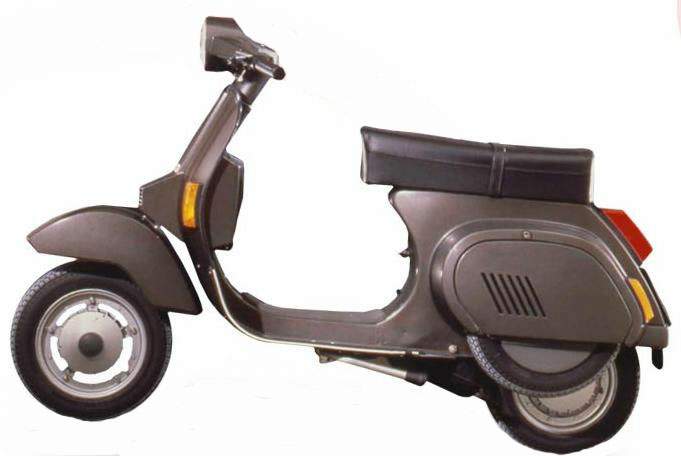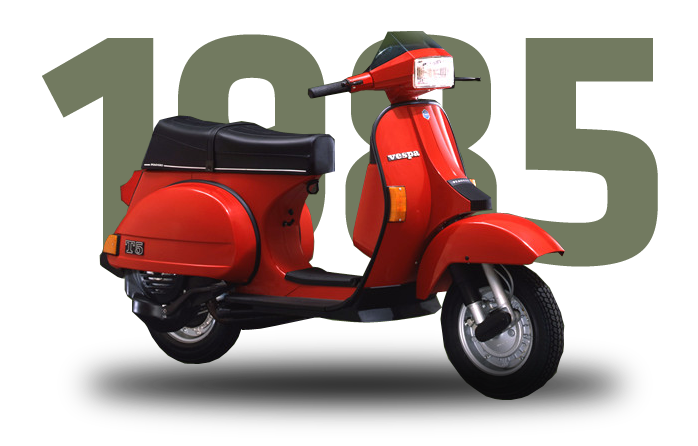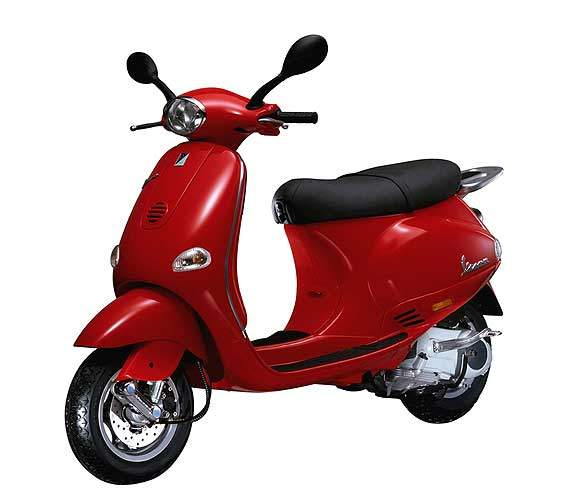Grab a further 5% off with code MAY25
Vespa Models
 Vespa P 125 X, 1978 - The "PX" marked a new step forward in styling (the bodywork was completely redesigned) and performance. The hold-all was positioned behind the cowling. The same year the P 200 E also appeared, which could be equipped with separate lubrication and direction indicators incorporated in the body. Three years later the PX 150 E was launched, with performance halfway between the two models.
Vespa P 125 X, 1978 - The "PX" marked a new step forward in styling (the bodywork was completely redesigned) and performance. The hold-all was positioned behind the cowling. The same year the P 200 E also appeared, which could be equipped with separate lubrication and direction indicators incorporated in the body. Three years later the PX 150 E was launched, with performance halfway between the two models.
Vespa PK 125, 1983 - This replaced the Vespa Primavera (standard and ET3), which remained in production with the "Classic" body for the Japanese market, where it was the best-selling Western two-wheeler vehicle. The styling was new, and the PK body was completely different from that of previous scooters, because the welds of the body no longer overlapped but were integral.
 Vespa PK 50, 1983 - Substantially identical to the PK 125, it appeared in two models, PK 50 and PK 50 S, both with 4-speed gearbox and electronic ignition.
Vespa PK 50, 1983 - Substantially identical to the PK 125, it appeared in two models, PK 50 and PK 50 S, both with 4-speed gearbox and electronic ignition.
Vespa PK 125 Automatic, 1984 - An automatic transmission was introduced on the Vespa, probably the most radical change (at least for the driver) since 1946. The presence of the automatic transmission was emphasised by the absence of the brake pedal, which was replaced by a lever on the left handlebar (which did not have to control the clutch as that was automatic). It was also available with automatic oil-petrol mixer and electric ignition. The following year the Vespa PK 50 Automatic was launched.
Vespa T 5 Pole Position, 1985 - The T 5 was the "extra-sporty" version of the PX series. With a new engine, aluminium cylinder and 5 intake ports, but the design was also new, particularly at the rear and around the front headlamp which incorporated an aggressive dome with a small Plexiglas windscreen. A spoiler was added on the cowling.
Vespa 50 N, 1989 - The changes to the Italian Highway Code meant that 50 cc vehicles were no longer bound by the 1.5 bhp limit, and Piaggio presented a new small Vespa with improved performance (over 2 bhp at 5,000 rpm), and new, smoother styling. A "Speedmatic" automatic version was also launched.
 Vespa ET4 125cc, 1996 - The "new generation Vespa" launched on the 50th anniversary. A completely new project, it is the first Vespa ever powered by a 4-stroke engine. The Vespa ET is equipped with a front disk brake and an automatic CVT gearbox.
Vespa ET4 125cc, 1996 - The "new generation Vespa" launched on the 50th anniversary. A completely new project, it is the first Vespa ever powered by a 4-stroke engine. The Vespa ET is equipped with a front disk brake and an automatic CVT gearbox.
Vespa ET2 50cc, 1997 - Same as the ET4 125, but with a 50cc 2-stroke catalysed engine.
Vespa ET4 150cc, 1999 - First Piaggio scooter equipped with the new generation 4-stroke Leader engine, now on the 125cc model too.
Vespa ET4 50cc, 2000 - The first small Vespa with a 4-stroke engine, combining lively performance that will make no one regret the 2-stroke with quiet running and the reduction of polluting emissions. Fuel economy is outstanding: the Vespa ET4 50 has the highest range in the 50 cc class, with approx. 500 km on a full tank.
